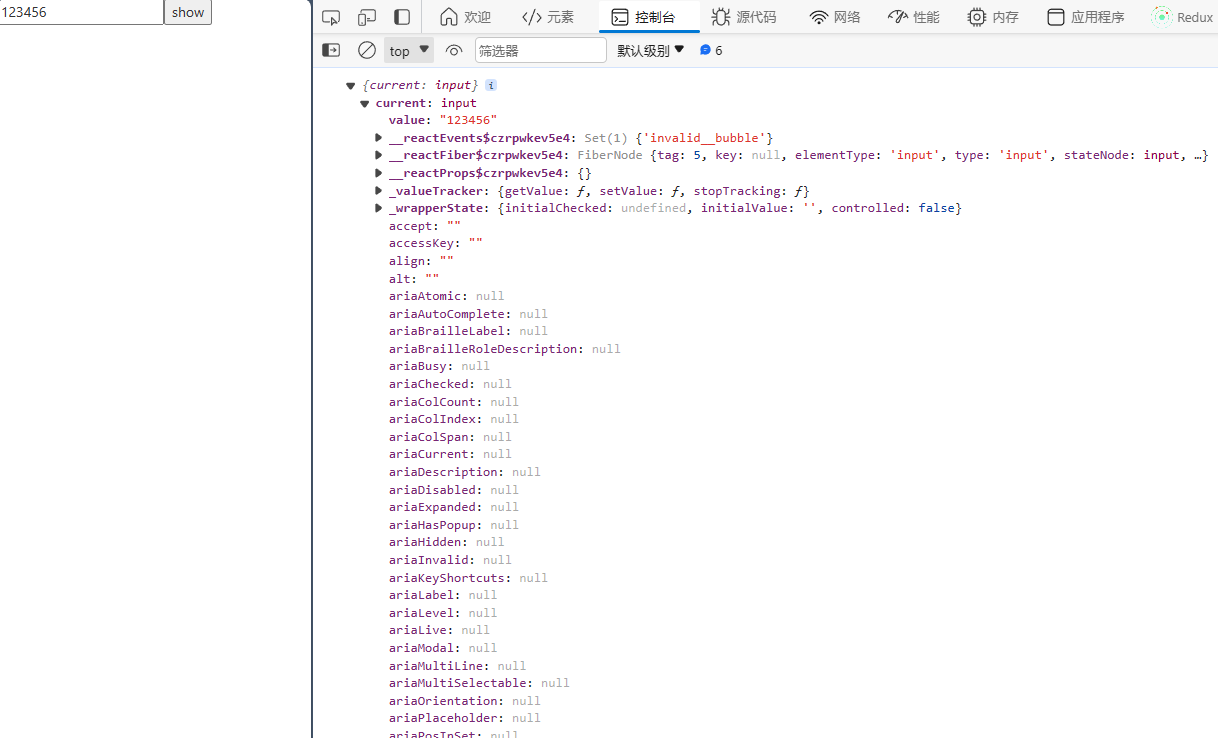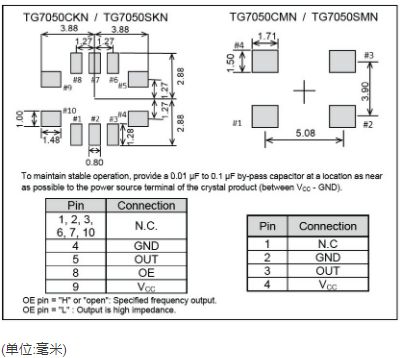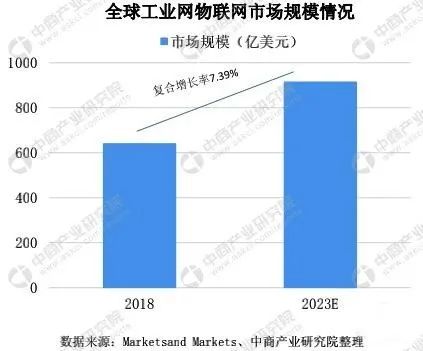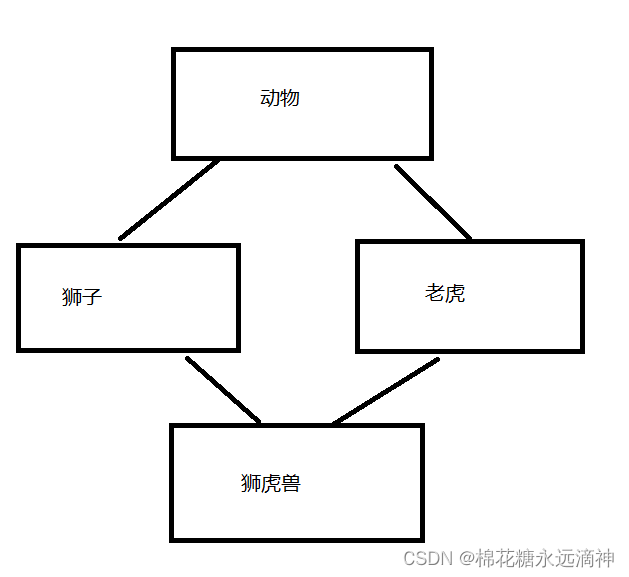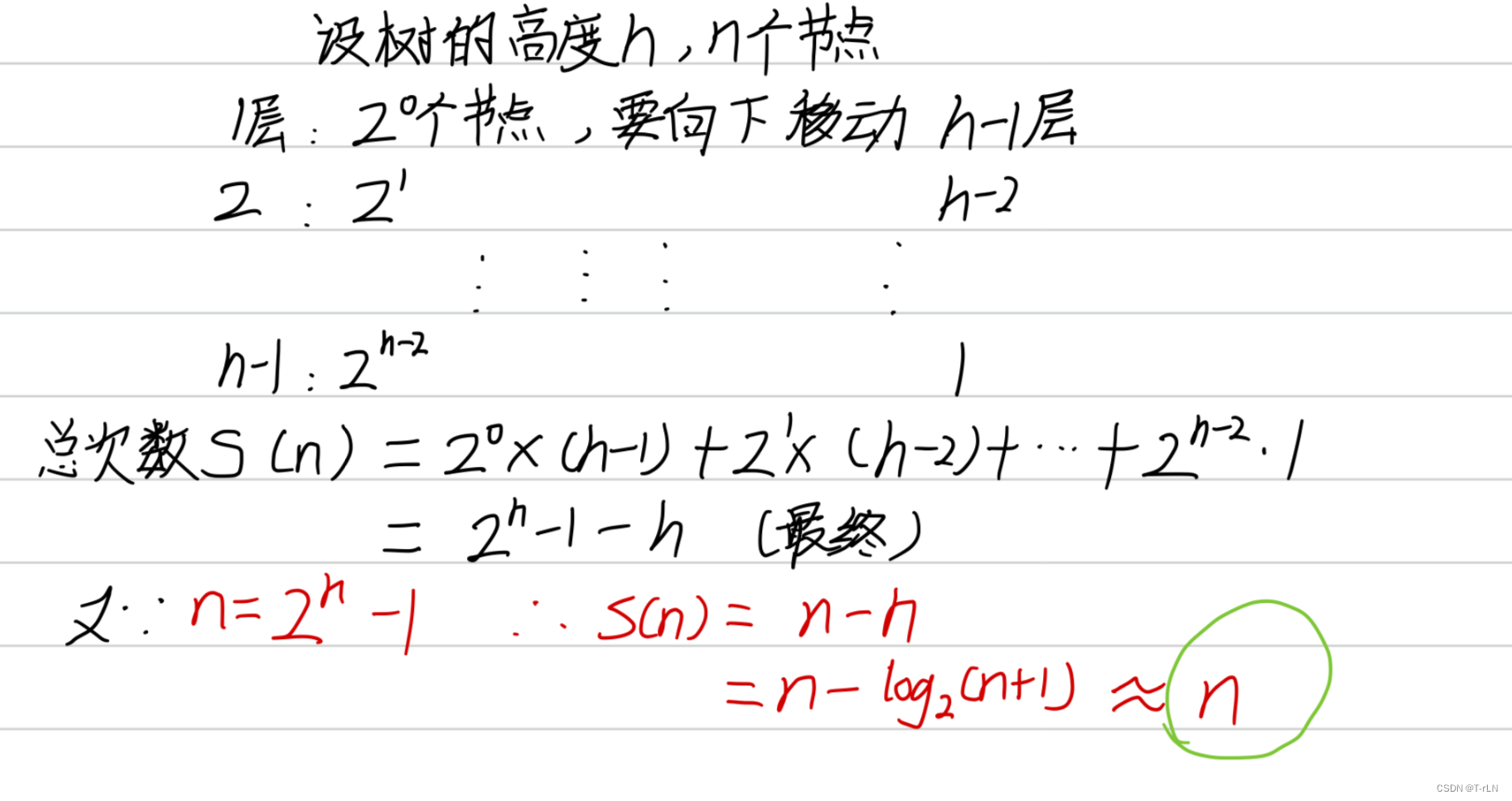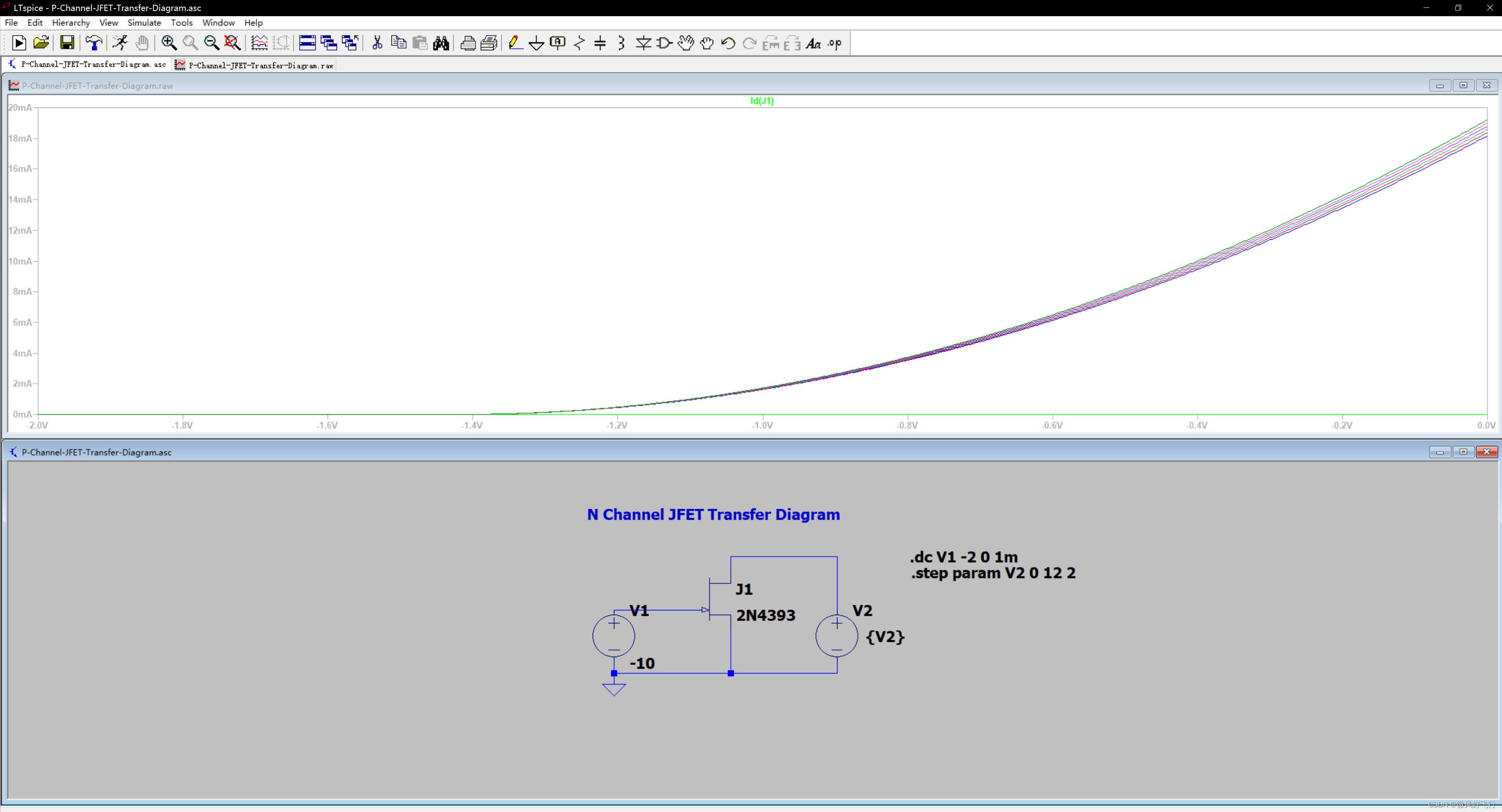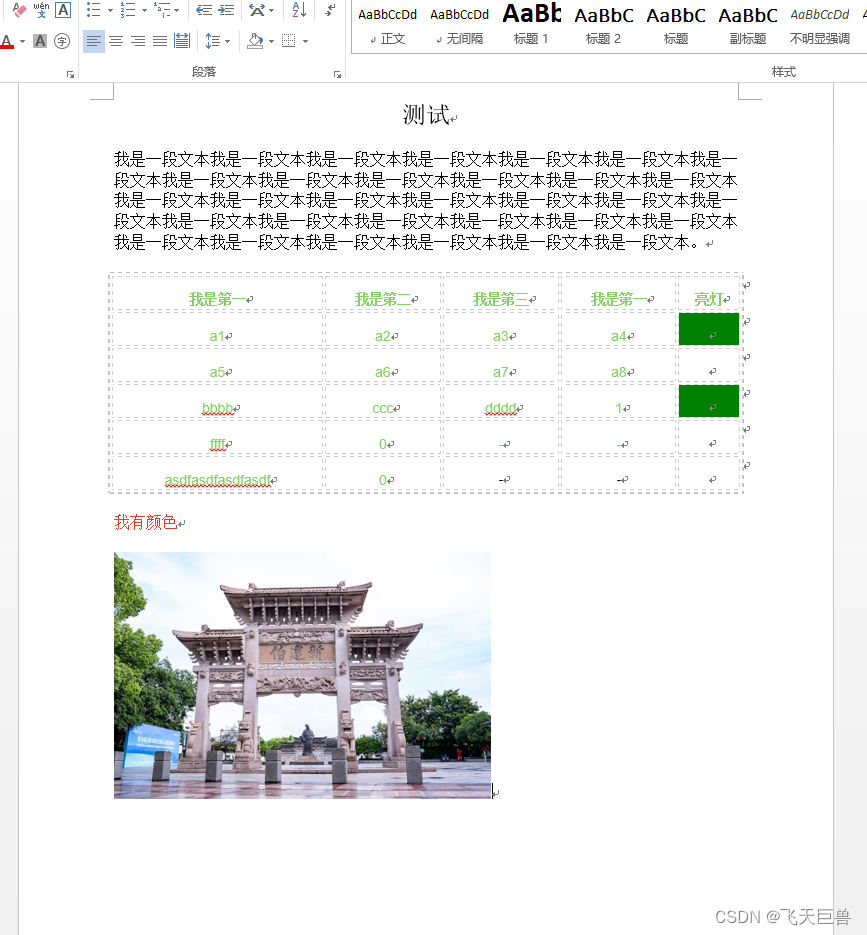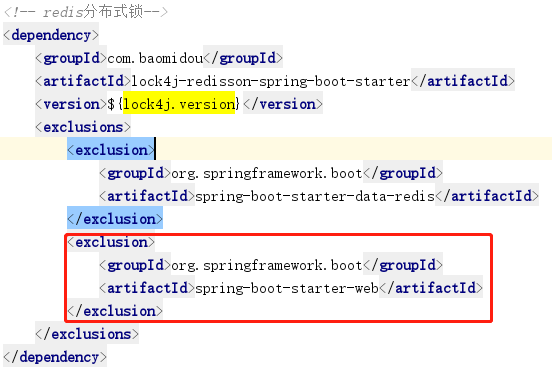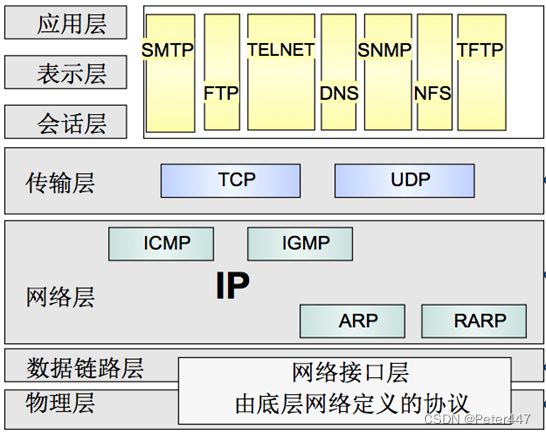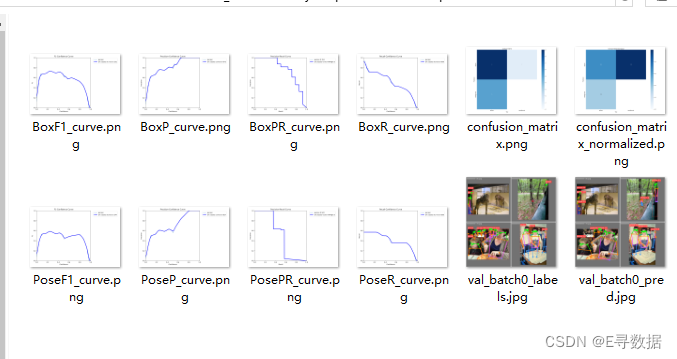事实验证文章分类 Papers Category For Fact Checking
By 2023.11
个人根据自己的观点,花了很多时间整理的一些关于事实验证领域证据召回,验证推理过程的文献综合整理分类(不是很严谨)。
引用请注明出处
欢迎从事事实验证Fact Checking领域的友友们前来交流,讨论。可以私信我,也可以评论我,我都会看到滴,欢迎有合作意愿的朋友们!
欢迎从事事实验证Fact Checking领域的友友们前来交流,讨论。可以私信我,也可以评论我,我都会看到滴,欢迎有合作意愿的朋友们!
欢迎从事事实验证Fact Checking领域的友友们前来交流,讨论。可以私信我,也可以评论我,我都会看到滴,欢迎有合作意愿的朋友们!
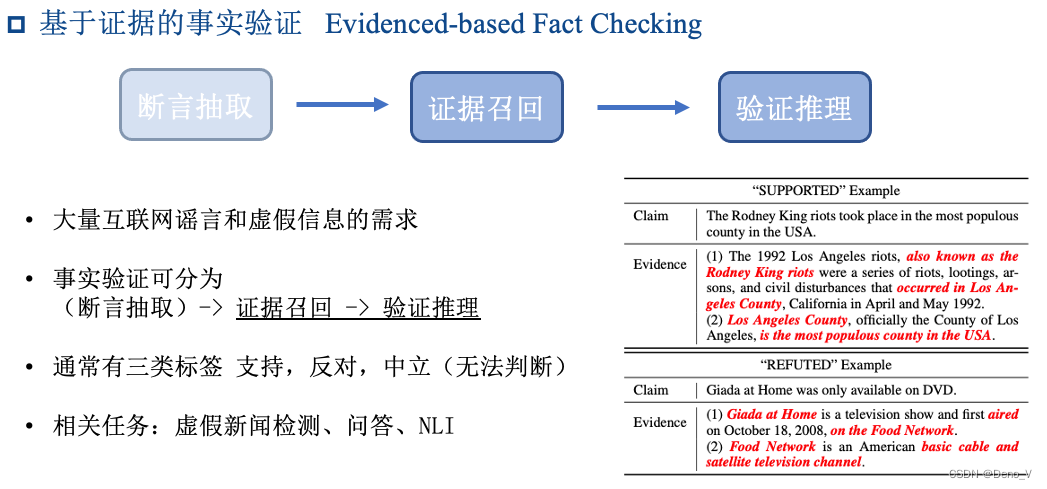
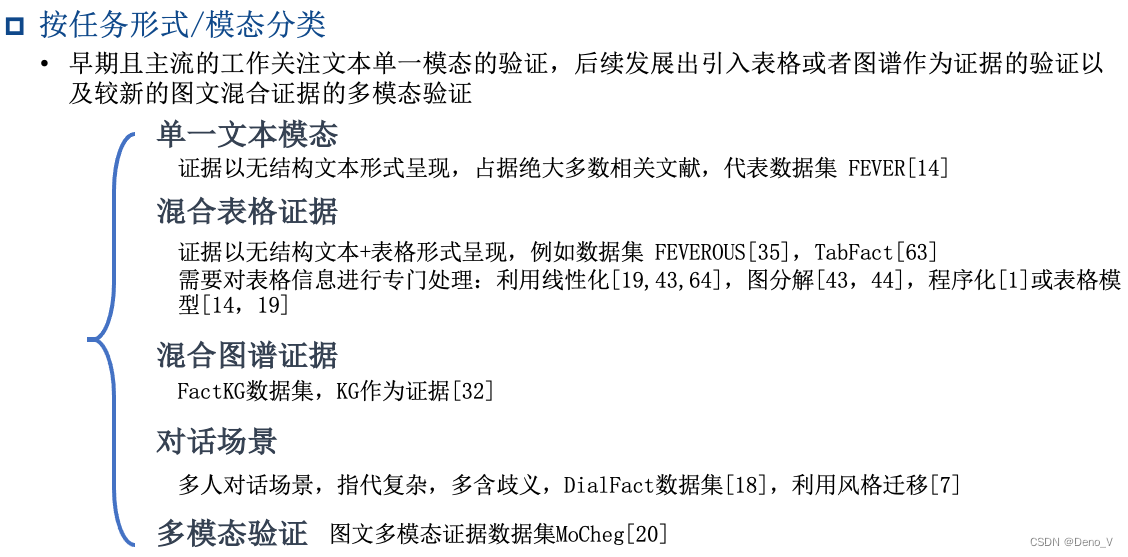
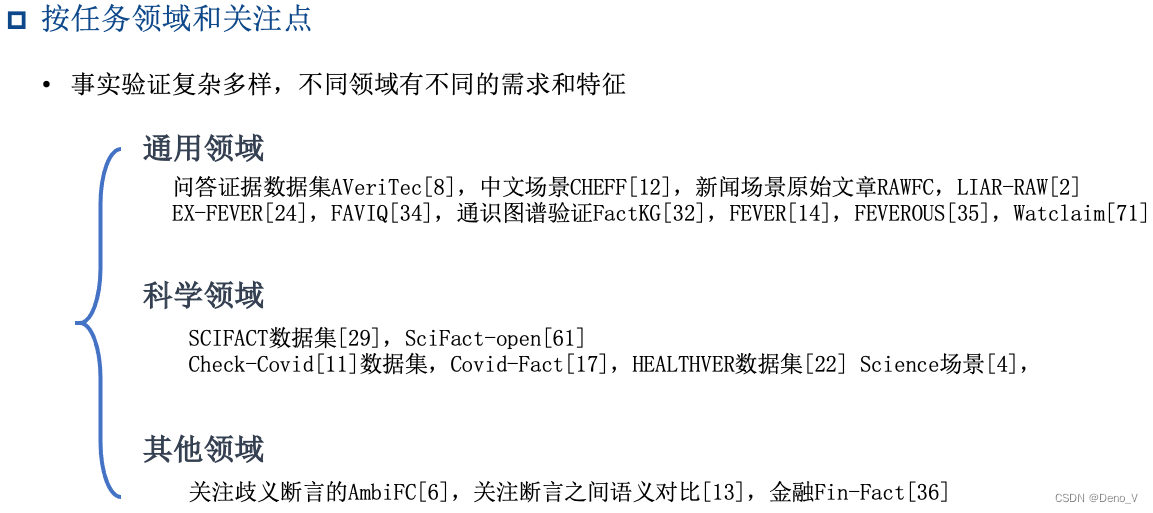
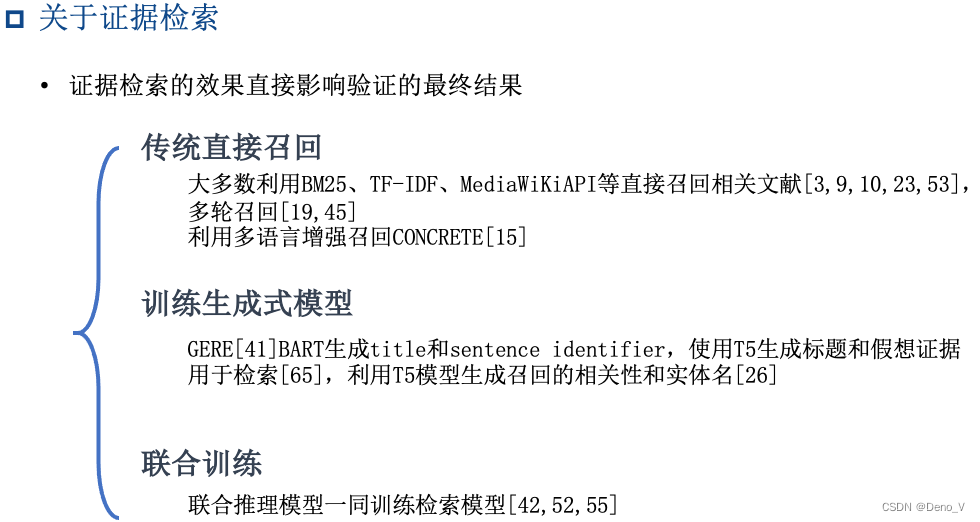
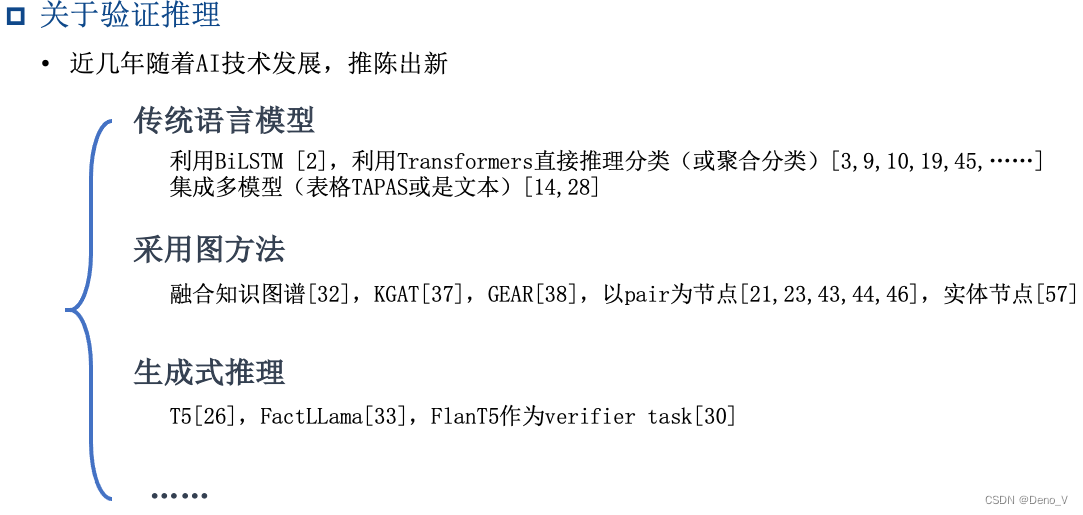
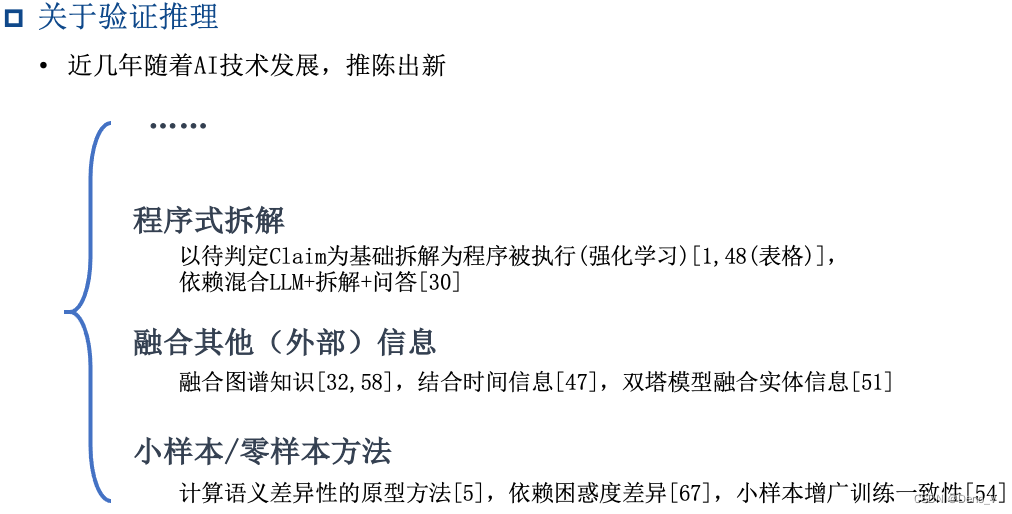

以上所有图片中标记的参考文献见下:
[1] Ou S, Liu Y. Learning to Generate Programs for Table Fact Verification via Structure-Aware Semantic Parsing[C]//Proceedings of the 60th Annual Meeting of the Association for Computational Linguistics (Volume 1: Long Papers). 2022: 7624-7638.
[2] Yang Z, Ma J, Chen H, et al. A Coarse-to-fine Cascaded Evidence-Distillation Neural Network for Explainable Fake News Detection[J]. arXiv preprint arXiv:2209.14642, 2022.
[3] Kruengkrai C, Yamagishi J, Wang X. A multi-level attention model for evidence-based fact checking[J]. arXiv preprint arXiv:2106.00950, 2021.
[4] Li X, Burns G A, Peng N. A Paragraph-level Multi-task Learning Model for Scientific Fact-Verification[C]//SDU@ AAAI. 2021.
[5] Zeng X, Zubiaga A. Aggregating Pairwise Semantic Differences for Few-Shot Claim Veracity Classification[J]. arXiv preprint arXiv:2205.05646, 2022.
[6] Glockner M, Staliūnaitė I, Thorne J, et al. AmbiFC: Fact-Checking Ambiguous Claims with Evidence[J]. arXiv e-prints, 2021: arXiv: 2104.00640.
[7] Chamoun E, Saeidi M, Vlachos A. Automated Fact-Checking in Dialogue: Are Specialized Models Needed?[J]. arXiv preprint arXiv:2311.08195, 2023.
[8] Schlichtkrull M, Guo Z, Vlachos A. AVeriTeC: A dataset for real-world claim verification with evidence from the web[J]. arXiv e-prints, 2023: arXiv: 2305.13117.
[9] Soleimani A, Monz C, Worring M. Bert for evidence retrieval and claim verification[C]//Advances in Information Retrieval: 42nd European Conference on IR Research, ECIR 2020, Lisbon, Portugal, April 14–17, 2020, Proceedings, Part II 42. Springer International Publishing, 2020: 359-366.
[10] DeHaven M, Scott S. BEVERS: A General, Simple, and Performant Framework for Automatic Fact Verification[J]. arXiv preprint arXiv:2303.16974, 2023.
[11] Wang G, Harwood K, Chillrud L, et al. Check-COVID: Fact-Checking COVID-19 News Claims with Scientific Evidence[J]. arXiv preprint arXiv:2305.18265, 2023.
[12] Hu X, Guo Z, Wu G, et al. CHEF: A Pilot Chinese Dataset for Evidence-Based Fact-Checking[J]. arXiv preprint arXiv:2206.11863, 2022.
[13] Ko M, Seong I, Lee H, et al. ClaimDiff: Comparing and Contrasting Claims on Contentious Issues[C]//Findings of the Association for Computational Linguistics: ACL 2023. 2023: 4711-4731.
[14] Funkquist M. Combining sentence and table evidence to predict veracity of factual claims using TaPaS and RoBERTa[C]//Proceedings of the Fourth Workshop on Fact Extraction and VERification (FEVER). 2021: 92-100.
[15] Huang K H, Zhai C X, Ji H. CONCRETE: Improving Cross-lingual Fact-checking with Cross-lingual Retrieval[J]. arXiv preprint arXiv:2209.02071, 2022.
[16] Si J, Zhu Y, Zhou D. Consistent Multi-Granular Rationale Extraction for Explainable Multi-hop Fact Verification[J]. arXiv preprint arXiv:2305.09400, 2023.
[17] Saakyan A, Chakrabarty T, Muresan S. COVID-fact: Fact extraction and verification of real-world claims on COVID-19 pandemic[J]. arXiv preprint arXiv:2106.03794, 2021.
[18] Gupta P, Wu C S, Liu W, et al. DialFact: A benchmark for fact-checking in dialogue[J]. arXiv preprint arXiv:2110.08222, 2021.
[19] Hu N, Wu Z, Lai Y, et al. Dual-channel evidence fusion for fact verification over texts and tables[C]//Proceedings of the 2022 Conference of the North American Chapter of the Association for Computational Linguistics: Human Language Technologies. 2022: 5232-5242.
[20] Yao B M, Shah A, Sun L, et al. End-to-end multimodal fact-checking and explanation generation: A challenging dataset and models[C]//Proceedings of the 46th International ACM SIGIR Conference on Research and Development in Information Retrieval. 2023: 2733-2743.
[21] Xu W, Wu J, Liu Q, et al. Evidence-aware fake news detection with graph neural networks[C]//Proceedings of the ACM Web Conference 2022. 2022: 2501-2510.
[22] Sarrouti M, Abacha A B, M’rabet Y, et al. Evidence-based fact-checking of health-related claims[C]//Findings of the Association for Computational Linguistics: EMNLP 2021. 2021: 3499-3512.
[23] Chen Z, Hui S C, Zhuang F, et al. EvidenceNet: Evidence Fusion Network for Fact Verification[C]//Proceedings of the ACM Web Conference 2022. 2022: 2636-2645.
[24] Ma H, Xu W, Wei Y, et al. EX-FEVER: A Dataset for Multi-hop Explainable Fact Verification[J]. arXiv preprint arXiv:2310.09754, 2023.
[25] Yang J, Vega-Oliveros D, Seibt T, et al. Explainable fact-checking through question answering[C]//ICASSP 2022-2022 IEEE International Conference on Acoustics, Speech and Signal Processing (ICASSP). IEEE, 2022: 8952-8956.
[26] Jiang K, Pradeep R, Lin J. Exploring listwise evidence reasoning with t5 for fact verification[C]//Proceedings of the 59th Annual Meeting of the Association for Computational Linguistics and the 11th International Joint Conference on Natural Language Processing (Volume 2: Short Papers). 2021: 402-410.[27]
[28] Bouziane M, Perrin H, Sadeq A, et al. FaBULOUS: Fact-checking Based on Understanding of Language Over Unstructured and Structured information[C]//Proceedings of the Fourth Workshop on Fact Extraction and VERification (FEVER). 2021: 31-39.
[29] Wadden D, Lin S, Lo K, et al. Fact or fiction: Verifying scientific claims[J]. arXiv preprint arXiv:2004.14974, 2020.
[30] Pan L, Wu X, Lu X, et al. Fact-Checking Complex Claims with Program-Guided Reasoning[J]. arXiv preprint arXiv:2305.12744, 2023.
[31] Rani A, Tonmoy S M, Dalal D, et al. FACTIFY-5WQA: 5W Aspect-based Fact Verification through Question Answering[J]. arXiv preprint arXiv:2305.04329, 2023.
[32] Kim J, Park S, Kwon Y, et al. FactKG: Fact Verification via Reasoning on Knowledge Graphs[J]. arXiv preprint arXiv:2305.06590, 2023.
[33] Cheung T H, Lam K M. FactLLaMA: Optimizing Instruction-Following Language Models with External Knowledge for Automated Fact-Checking[J]. arXiv preprint arXiv:2309.00240, 2023.
[34] Park J, Min S, Kang J, et al. FAVIQ: FAct Verification from Information-seeking Questions[J]. arXiv preprint arXiv:2107.02153, 2021.
[35] Aly R, Guo Z, Schlichtkrull M, et al. FEVEROUS: Fact extraction and VERification over unstructured and structured information[J]. arXiv preprint arXiv:2106.05707, 2021.
[36] Rangapur A, Wang H, Shu K. Fin-Fact: A Benchmark Dataset for Multimodal Financial Fact Checking and Explanation Generation[J]. arXiv preprint arXiv:2309.08793, 2023.
[37] Liu Z, Xiong C, Sun M, et al. Fine-grained fact verification with kernel graph attention network[J]. arXiv preprint arXiv:1910.09796, 2019.
[38] Zhou J, Han X, Yang C, et al. GEAR: Graph-based evidence aggregating and reasoning for fact verification[J]. arXiv preprint arXiv:1908.01843, 2019.
[39] Fan A, Piktus A, Petroni F, et al. Generating fact checking briefs[J]. arXiv preprint arXiv:2011.05448, 2020.
[40] Chen J, Sriram A, Choi E, et al. Generating literal and implied subquestions to fact-check complex claims[J]. arXiv preprint arXiv:2205.06938, 2022.
[41] Chen J, Zhang R, Guo J, et al. GERE: Generative evidence retrieval for fact verification[C]//Proceedings of the 45th International ACM SIGIR Conference on Research and Development in Information Retrieval. 2022: 2184-2189.
[42] Hu X, Guo Z, Wu G, et al. Give Me More Details: Improving Fact-Checking with Latent Retrieval[J]. arXiv preprint arXiv:2305.16128, 2023.
[43] Kotonya N, Spooner T, Magazzeni D, et al. Graph reasoning with context-aware linearization for interpretable fact extraction and verification[J]. arXiv preprint arXiv:2109.12349, 2021.
[44] Lin H, Fu X. Heterogeneous-Graph Reasoning and Fine-Grained Aggregation for Fact Checking[C]//Proceedings of the Fifth Fact Extraction and VERification Workshop (FEVER). 2022: 6-15.
[45] Subramanian S, Lee K. Hierarchical evidence set modeling for automated fact extraction and verification[J]. arXiv preprint arXiv:2010.05111, 2020.
[46] Wang H, Li Y, Huang Z, et al. IMCI: Integrate Multi-view Contextual Information for Fact Extraction and Verification[J]. arXiv preprint arXiv:2208.14001, 2022.
[47] Allein L, Saelens M, Cartuyvels R, et al. Implicit Temporal Reasoning for Evidence-Based Fact-Checking[J]. arXiv preprint arXiv:2302.12569, 2023.
[48] Ou S, Liu Y. Learning to Generate Programs for Table Fact Verification via Structure-Aware Semantic Parsing[C]//Proceedings of the 60th Annual Meeting of the Association for Computational Linguistics (Volume 1: Long Papers). 2022: 7624-7638.
[49] Jin Z, Lalwani A, Vaidhya T, et al. Logical fallacy detection[J]. arXiv preprint arXiv:2202.13758, 2022.
[50] Chen J, Bao Q, Sun C, et al. Loren: Logic-regularized reasoning for interpretable fact verification[C]//Proceedings of the AAAI Conference on Artificial Intelligence. 2022, 36(10): 10482-10491.
[51] Liu Y, Zhu C, Zeng M. Modeling Entity Knowledge for Fact Verification[C]//Proceedings of the Fourth Workshop on Fact Extraction and VERification (FEVER). 2021: 50-59.
[52] Wadden D, Lo K, Wang L L, et al. MultiVerS: Improving scientific claim verification with weak supervision and full-document context[J]. arXiv preprint arXiv:2112.01640, 2021.
[53] Saeed M, Alfarano G, Nguyen K, et al. Neural re-rankers for evidence retrieval in the FEVEROUS task[C]//Proceedings of the Fourth Workshop on Fact Extraction and VERification (FEVER). 2021: 108-112.
[54] Zeng F, Gao W. Prompt to be Consistent is Better than Self-Consistent? Few-Shot and Zero-Shot Fact Verification with Pre-trained Language Models[J]. arXiv preprint arXiv:2306.02569, 2023.
[55] Pan L, Lu X, Kan M Y, et al. QACHECK: A Demonstration System for Question-Guided Multi-Hop Fact-Checking[J]. arXiv preprint arXiv:2310.07609, 2023.
[56] Hu X, Hong Z, Guo Z, et al. Read it Twice: Towards Faithfully Interpretable Fact Verification by Revisiting Evidence[C]//Proceedings of the 46th International ACM SIGIR Conference on Research and Development in Information Retrieval. 2023: 2319-2323.
[57] Zhong W, Xu J, Tang D, et al. Reasoning over semantic-level graph for fact checking[J]. arXiv preprint arXiv:1909.03745, 2019.
[58] Nikopensius G, Mayank M, Phukan O C, et al. Reinforcement learning-based knowledge graph reasoning for explainable fact-checking[J]. arXiv preprint arXiv:2310.07613, 2023.
[59] Rakotoson L, Letaillieur C, Massip S, et al. Science Checker: Extractive-Boolean Question Answering For Scientific Fact Checking[J]. arXiv preprint arXiv:2204.12263, 2022.
[60] Vladika J, Matthes F. Scientific Fact-Checking: A Survey of Resources and Approaches[J]. arXiv preprint arXiv:2305.16859, 2023.
[61] Wadden D, Lo K, Kuehl B, et al. SciFact-open: Towards open-domain scientific claim verification[J]. arXiv preprint arXiv:2210.13777, 2022.
[62] Li M, Peng B, Zhang Z. Self-Checker: Plug-and-Play Modules for Fact-Checking with Large Language Models[J]. arXiv preprint arXiv:2305.14623, 2023.
[63] Chen W, Wang H, Chen J, et al. Tabfact: A large-scale dataset for table-based fact verification[J]. arXiv preprint arXiv:1909.02164, 2019.
[64] Zhou Y, Liu X, Zhou K, et al. Table-based fact verification with self-adaptive mixture of experts[J]. arXiv preprint arXiv:2204.08753, 2022.
[65] Malon C. Team papelo at FEVEROUS: Multi-hop evidence pursuit[C]//Proceedings of the Fourth Workshop on Fact Extraction and VERification (FEVER). 2021: 40-49.
[66] Si J, Zhou D, Li T, et al. Topic-aware evidence reasoning and stance-aware aggregation for fact verification[J]. arXiv preprint arXiv:2106.01191, 2021.
[67] Lee N, Bang Y, Madotto A, et al. Towards few-shot fact-checking via perplexity[J]. arXiv preprint arXiv:2103.09535, 2021.
[68] Bazaga A, Liò P, Micklem G. Unsupervised Fact Verification by Language Model Distillation[J]. arXiv preprint arXiv:2309.16540, 2023.
[69] Ousidhoum N, Yuan Z, Vlachos A. Varifocal Question Generation for Fact-checking[J]. arXiv preprint arXiv:2210.12400, 2022.
[70] Gi I Z, Fang T Y, Tsai R T H. Verdict Inference with Claim and Retrieved Elements Using RoBERTa[C]//Proceedings of the Fourth Workshop on Fact Extraction and VERification (FEVER). 2021: 60-65.
[71] Khan K, Wang R, Poupart P. WatClaimCheck: A new dataset for claim entailment and inference[C]//Proceedings of the 60th Annual Meeting of the Association for Computational Linguistics (Volume 1: Long Papers). 2022: 1293-1304.
